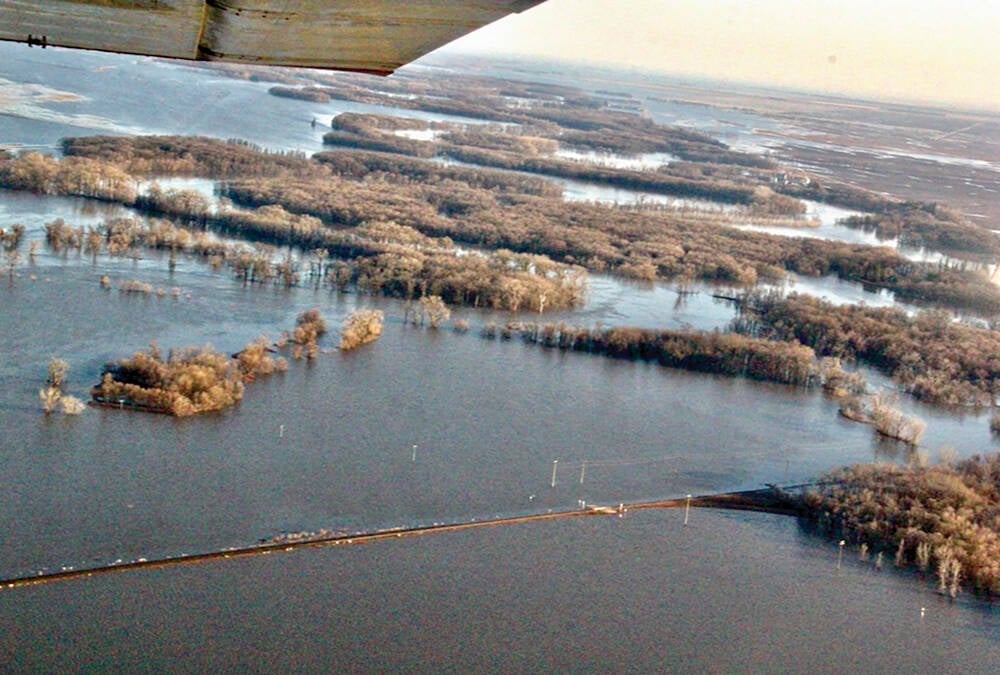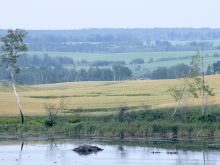PEACE GARDEN, Man. – Planting 150,000 flowers each year is no easy feat, especially in a short growing season. Sometimes things go well. Sometimes they don’t, as John McQueen has learned during six years as executive director of the International Peace Garden.
“We normally start planting in early June,” McQueen said. “If everything goes right, and sometimes it does, we’re done in 10 days. This year it was pretty near the end of June before everything was done.”
The garden, devoted to world peace, was established 73 years ago south of Boissevain, Man. The 2,339 acre botanical garden straddles the international boundary between Canada and the United States. Henry Moore, a horticulturist for the Ontario Department of Agriculture, conceived the idea for the Peace Garden in 1928.
Read Also

Rural Manitoba resources slim on natural disaster planning
A study from Brandon University’s Rural Development Institute has found that many rural and small municipalities don’t have the staff or resources to make formal climate plans against natural disaster.
The Peace Garden was dedicated on July 14, 1932, with a crowd estimated as large as 70,000 people.
The flowers are a hallmark of the garden. As the full-time director of horticulture, Connie Lagerquist maps out what will be planted each year and oversees the nurturing.
Many of the flowers are started in a greenhouse and then transplanted outdoors. One of the pleasures for Lagerquist is sharing gardening ideas with visitors to the Peace Garden. Another reward is the reaction of tourists when the flowers are at their peak. Colour is among the attributes she looks for when deciding which varieties to grow.
“I have to make sure it’s something the tourists are going to like. They like the bright, bright colours.”
Nestled in the Turtle Mountain, the Peace Garden is at an elevation about 1,000 feet higher than the surrounding prairie. The short growing season makes it difficult to know when the flowers should be planted outdoors.
“If I don’t get them in by June 1, they don’t have a long enough growing season,” Lagerquist said. “But if I plant them before June 1, I can almost bet on a frost.”
Among the most striking features of this park-like setting is a terraced formal garden with ponds that provide the perfect backdrop for events such as summer weddings. There also is a floral clock, with an interesting story of its own.
The floral clock was donated by the Bulova company in 1966. It is an actual clock with working hands to tell time, but the face of the clock is planted with a dazzling display of flowers each year.
In the spring of 2004, the clock quit working. It had succumbed to the passage of time, the very thing that it had quietly kept track of for almost four decades.
“We couldn’t get it going last summer,” said McQueen, in a reverent tone. “It finally passed on to where old clocks go.”
The mechanisms that drove the clock were antiquated by comparison with today’s technology and because of their size they were housed in a building that was screened from public view by trees. The new devices that run the clock are much smaller. McQueen said they could easily fit inside a mailbox.
The Peace Garden has many distinctive features, and not all of them have to do with horticulture. Two of the most symbolic structures are the peace chapel and the peace towers.
The quiet inside the peace chapel is almost numbing. Three of the interior walls feature quotes written or spoken by “people of peace” throughout history. The quotes are engraved in limestone.
The peace towers are four gigantic columns of cement that jut 36 metres into the air. Two of the columns are on the Canadian side of the border and two are on the U.S. side. The distance between them is only a few strides.
It costs about $1.2 million to operate the Peace Garden each year. The province of Manitoba and the state of North Dakota each cover a quarter of that cost, McQueen said. The other 50 percent comes from gate admissions and revenues from renting buildings at the garden.
Among those helping keep the spirit of peace alive between Canada and the U.S. are a car club, a ham radio group and a square dance club that have members from both sides of the border. Each of those groups has at least one event each year at the Peace Garden to draw their members together.
A music camp attracts 2,500 children and youth each June and July. A sports camp hosts about 1,800 kids in July and August.
A flower and quilt show was one of the more recent additions to the Peace Garden’s summer calendar. More than 100 quilts were featured at this year’s show.
The International Peace Garden usually attracts about 150,000 visitors each year. In the six years that he has been there, McQueen has seen visitors from all the provinces and territories, including Nunavut.
“From the American side, I’ve seen licence plates from 49 of the 50 states. I’ve had one from Alaska but I’m still looking for the one from Hawaii.”
The gates to the garden remain open year-round.














